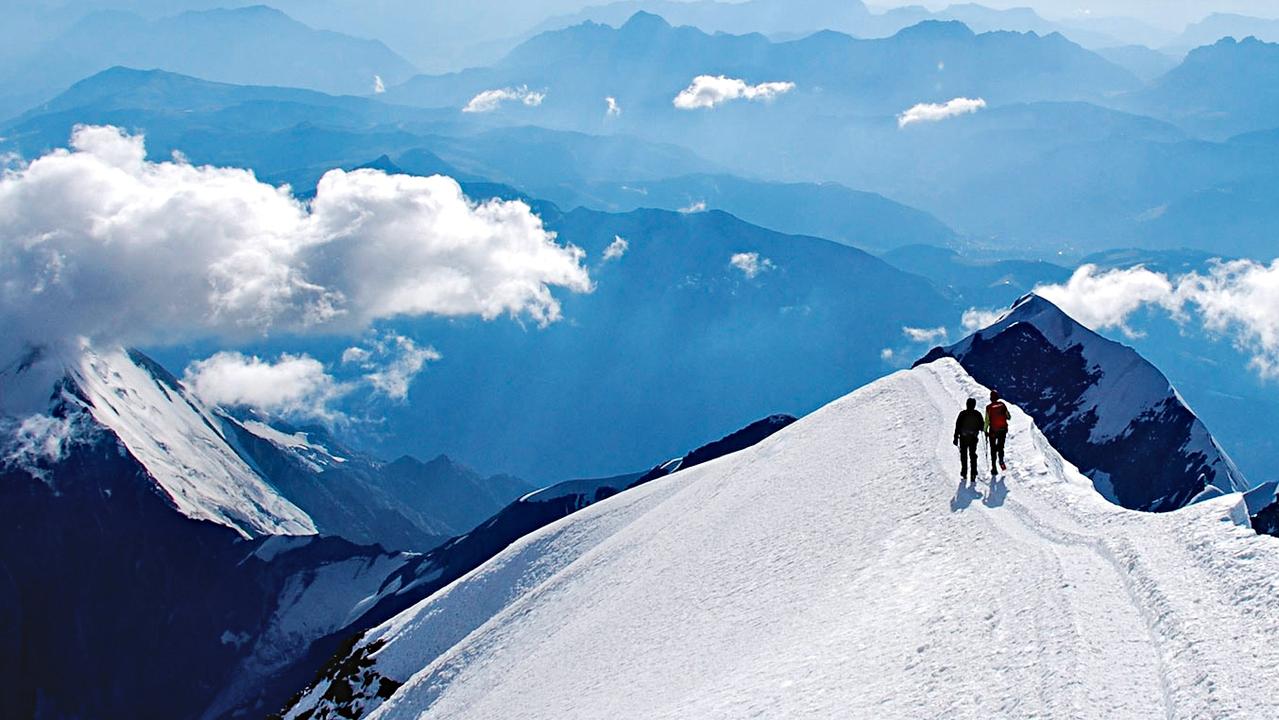Silent flight in Zeppelin is a gas
ZEPPELINS, those cigar-shaped blimps sometimes seen hovering above Australian football fields, are up, up and away again in the birthplace of air travel.

THERE was no engine roar. The nose cone moved gently away from the mooring mast, the guide ropes were released and we lifted silently into the air.
Soon, with hardly a murmur from the propellers, we were floating 300m above Lake Bodensee and looking down through the gondola windows on to history.
Arguably, the skies above Friedrichshafen in southern Germany close to the Austrian and Swiss borders are the most famous in the world. It is the birthplace of air travel.
The international aviation industry was born above Lake Constance. Thanks to one man.
Count Ferdinand Adolf August Heinrich von Zeppelin, a cavalry general and diplomat who died in 1917 and was buried in Stuttgart, first flew a zeppelin in 1900 from pontoons moored off the Bay of Manzell in Lake Constance.
This was three years before the Wright brothers flew their plane at Kitty Hawk in the United States.
Having first seen balloons during the siege of Paris in the Franco-Prussian War, Zeppelin bought a design from Croatian inventor David Schwarz and patented it as "a steerable all-cruising train".
The first lighter-than-air flight lasted 18 minutes, being curtailed by technical difficulties. The cloth-covered prototype was 128m long and powered by Daimler engines.
One hundred and seventeen airships or dirigibles eventually rolled off the production line. The first airships were used for surveillance and bombing raids during World War I.
Count Zeppelin's cigar-shaped brainchild gave birth to other big businesses. Airplanes from Dornier and engines from Maybach emerged out of the technology transfer of airship construction. Friedrichshafen became the cradle for German industrial history.
In the 1930s zeppelins carried passengers and mail across the Atlantic. Some 140 flights were made to the US by commercial airships. Altogether 600 commercial zeppelin flights were made.
In 1929, LZ 127 Graf Zeppelin, with six pilots on board, completed a 12-day world tour by way of New York, Los Angeles and Tokyo, organised by press baron William Randolph Hearst.
Some artefacts from this momentous event in civil aviation history can be seen in Friedrichshafen's Zeppelin Museum, formerly the harbour railway station.
You can see blueprints, engine parts, original ticket stubs, posters, menus, cutlery and porcelain chinaware used on the VIP flights. There is also a gift shop selling everything from Zeppelin T-shirts, cigarette lighters, jigsaw puzzles and even bottles of 2005 Graf Zeppelin Pinot Blanc.
There is also a partial reconstruction of the LZ129 Hindenburg which crashed in 1937 in Lakehurst, New Jersey, killing 35 people.
The cotton-skinned, diesel-powered, 61-crew Hindenburg launched the first route between Frankfurt and the US. The first trip took 60 hours. At 245m long, it was longer than three 747s put end to end.
Because of a military embargo it was weighed down with inflammable hydrogen. But now helium is used, as well as rigid aluminium rings and girders and latest high-strength multi-layer laminate fabrics.
After 60 years zeppelins are being built and flown again in Friedrichshafen. The first modern zeppelin was built there in 1997.
City-to-city flights are planned. Perhaps to Paris and Berlin. Even London. There are three in the modern fleet.
The 75m long, 19.5m wide zeppelin NT-07, which costs $9 million to build, is the world's largest airship. One has been sold to Japan to be used for sightseeing and advertising. Another is being used by De Beers to locate diamonds in Botswana's Kalahari Desert. Slow-moving and unbothered by turbulence, airships allow highly sensitive probes and other hi-tech hardware to find precious stones.
I was one of 12 joyriders to take off from outside a hangar around the corner from the main Friedrichshafen airport. The route took us over Hagnau, Meersburg and Kreuzbergen, then to Konstanz and the Rhine inlet.
With Captain Paul Strohle in the cockpit, we lapped the lake by air at speeds up to 75km/h. It felt like no speed at all. We were all gazing out the window. No one spoke.
Then there is Lake Constance, the largest lake in Germany. There are 173km of German shoreline, 72km of Swiss and 28km of Austrian. The lake provides the local restaurants with fish such as pike-perch and char.
The UNESCO World Heritage site of Reichenau with its three Romanesque churches, provides the vegetables. The local vineyards, which have been producing for 750 years, specialise in Muller-Thurgau, a hybrid of Riesling and Sylvaner.
The giant gasbag, which takes three weeks to inflate, moved silently over the landscape, passing above orchards, hop fields, castles, convents, marshlands, fishing and sailing boats, windsurfers and campsites.
From Friedrichshafen you can also get a ferry or catamaran to explore the little lakeside towns of Uberlingen, Langenargen, Kressbronn, Wasserburg and Bad Schachen.
Constanz is the largest town, where you can walk the atmospheric medieval Kreuzlingerstarsse and take in the sights before taking to the sky yet again for a really magical flight.



